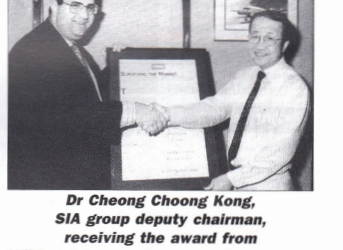If you want to own your own business, there’s a school in the United States that may help you realize your dream. It’s called Hamburger University and the ‘professors’ work for McDonald’s.
At Hamburger University, McDonald’s staff teaches future restaurant owners a recipe for success in the fast food business. From marketing and sales to making French fries, students learn how to operate a McDonald’s restaurant or franchise.
Franchises are the cornerstone of McDonald’s phenomenal growth. Dozens of other companies, both Western and Asian, successfully franchise their operations around the world. Many currently target countries in Asia like Japan, Hong Kong and Singapore where economies are most developed. But, most say they have plans to expand the scope of their franchises to include all of Asia.
That expansion could represent tremendous opportunities for budding entrepreneurs in Asia.
Experts say the following industries are hot areas for franchising in Asia:
- Food
- Fashion
- Beauty
- Small Retail
Here’s how a typical franchise works
A company develops a concept, product or business idea. That company then sells the rights of that business to another group.
The original company provides information, support and knowhow to run the business.
The new group then runs the business with the help of the original company. The franchise arrangement attracts many would-be entrepreneurs because a franchise offers someone a chance to run his/ her own company but with reduced risk. In the United States, franchises are successful 95% of the time. But, only two out of every three small businesses succeed.
One industry expert says many in Asia acknowledge the problems of starting a business alone.
‘I suppose even the younger breed of entrepreneurs recognizes that you can’t do business by flying by the seat of your pants,” says Tan Thuan Seng, President of the Singapore International Franchise Association.
‘I think franchising is a very effective way of combining the advantages of modern business management systems with entrepreneurship.’
But, like any successful relationship, it takes work. In the case of a franchise agreement, the relationship between the two parties is often contentious. In Australia, the Bureau of Statistics estimates that nearly one in five companies is in some form of litigation with a franchisee.
Before you negotiate a deal, here are some tips:
1) Learn as much about the franchiser as possible
‘It’s not something you would want to take a decision on the basis of meeting up with a hot-shot franchise broker or franchise salesman,’ says Tan. ‘You should really also come and visit the franchiser’s operation, visit the franchisee’s and see whether they are actually happy with the system they have acquired.’
2) Do your own market research
Tan says franchising faces. many obstacles in Asia that it doesn’t face in other parts of the world.
“The downsides in Asia come from the fact that we operate in a very diverse cultural and economic background.’
Also, the legal systems are very different country by country and if a franchiser does not take these realities into account then they may very well make a mistake that the Asia-Pacific is a unified market,’ he says.
The parent company often provides market research for the entrepreneur. While that research can be quite good, experts suggest that you do some of your own.
3) Be prepared for hard work
Ten & Han Trading of Singapore franchises Old Chang Kee curry puff shops. Ten & Han boasts successful franchises in Japan, Indonesia, Malaysia and South Africa.
It’s not only the ingredients in the curry puffs that must meet the company’s standards.
“We need an upstart, young entrepreneur who can put in a lot of hard work because in our food business we put in something like 12 to 14 hours a day,’ says Bugs Ten, a director with Ten & Han Trading.
‘And, he must have basic minimum financial resources to do this business.”
There are three main costs associated with a franchise:
■Royalties
After securing a rights fee, the entrepreneur sets up the business, but does not keep all the money. In Asia, he must pay a royalty usually ranging from 3 to 10 % of total sales back to the company.
■Rights Fee
Before an entrepreneur can own a franchise, he must negotiate a rights fee with the franchiser. That fee secures exclusive rights for an entrepreneur to operate a business in a given location. In other words, the franchiser can not sell the right to anyone else in that region. Rights fees generally range between US$25,000 and US$100,000.
But, keep in mind, that it takes some time between negotiating a rights fee and actually setting up shop.
In the case of Old Chang Kee curry puffs, for example, Ten says that from when he first signs up an entrepreneur it can take six months or more before they sell their first curry puff.
Some companies offer the rights to entire countries, not just specific locations. However, those fees are quite pricey it can easily run as high as US$500,000 0430 and is out of reach for many individual investors.
■Renewal Costs
Most franchise agreements run for a specific period of time usually from one to ten years. After that period expires, the entrepreneur effectively may own nothing. He must renegotiate rights fees and royalties again. However, there are some agreements that spell out renewal costs.
With rapid economic growth in the region, experts say Asia may become one of the world’s hottest markets for franchising. But, like any hot market, it’s easy to get burnt. If a budding entrepreneur approaches franchise ownership thoughtfully and cautiously, the potential in Asia could be enormous.



